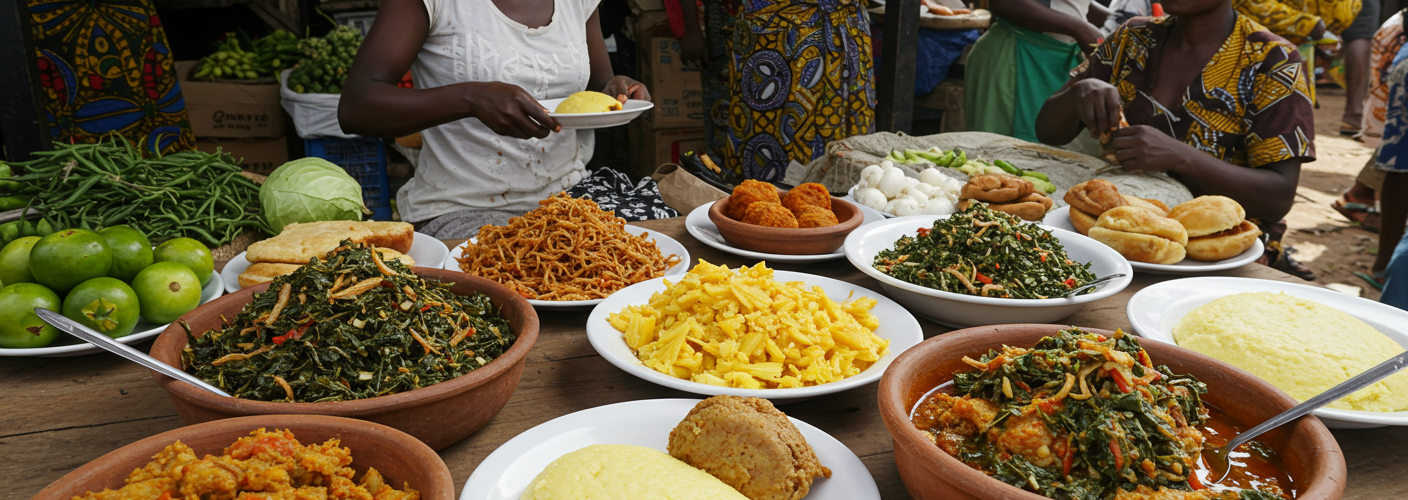Angola, a vibrant country in sub-Saharan Africa, boasts a rich cultural tapestry that is beautifully reflected in its cuisine. The country’s food is a delightful fusion of indigenous ingredients, Portuguese influences, and flavors brought by various African communities. This article invites you to discover the unique and delicious aspects of Angolan food.
Staples of Angolan Cuisine
At the heart of Angolan meals is funje, a staple made from ground cassava, maize, or corn. This thick porridge-like dish serves as the foundation for most meals and can be flavored with various sauces and ingredients. Funje is often enjoyed with stews or grilled meats, making it a versatile accompaniment to a wide range of dishes.
Rice is another staple in Angola, frequently served alongside meats and vegetables. It is especially prominent in coastal regions, where fishing traditions are strong. The rice dishes may be prepared in various ways, including being cooked with tomato sauce, vegetables, or seafood.
Signature Dishes
One cannot discuss Angolan food without mentioning muamba de galinha. This is a traditional chicken stew that incorporates palm oil, okra, and spices, resulting in a fragrant and flavorful dish. It is often paired with funje and served during special occasions and family gatherings.
Another favorite is caldeirada, a hearty fish stew commonly enjoyed along the coastline. Prepared with a mix of fish, shellfish, and local vegetables, caldeirada is often seasoned with garlic, onion, and peppers, showcasing the beautiful taste of Angola’s maritime resources.
For meat lovers, picanha (a popular cut of beef) is commonly grilled and served with a tangy sauce, often accompanied by sides of beans and rice. This dish reflects the influence of Portuguese cuisine on Angola, particularly in preparation and flavors.
Street Food Culture
Angola’s culinary landscape is also characterized by its vibrant street food scene. Vendors serve a variety of snacks that capture the essence of local flavors. Sambo (fried meat), kuduro (corn dough fried with meat), and broas de milho (sweet corn pancakes) are just a few examples of popular street offerings. These quick bites are perfect for those on the go and provide a glimpse into daily life in Angola.
Signature Ingredients
Angolan cuisine is rich in ingredients that provide depth of flavor and nutrition. Palm oil is a staple, used for cooking as well as for flavoring dishes. This oil is often complemented by a variety of spices, including garlic, ginger, and chili, giving food its distinctive taste.
Peanuts also play a significant role in dishes and sauces, adding creaminess and a nutty flavor. From traditional stews to dipping sauces, peanuts enhance the culinary experience in various forms.
Conclusion
Angolan food is a celebration of culture, history, and community. With its blend of indigenous traditions and outside influences, Angolan cuisine highlights the rich flavors and ingredients the region has to offer. Whether indulging in a warm bowl of muamba de galinha or savoring street snacks, the diverse offerings of Angola provide a culinary adventure that is both memorable and satisfying. Exploring these flavors is not just about food; it’s also about storytelling, heritage, and the connections that bring people together.




Add comment